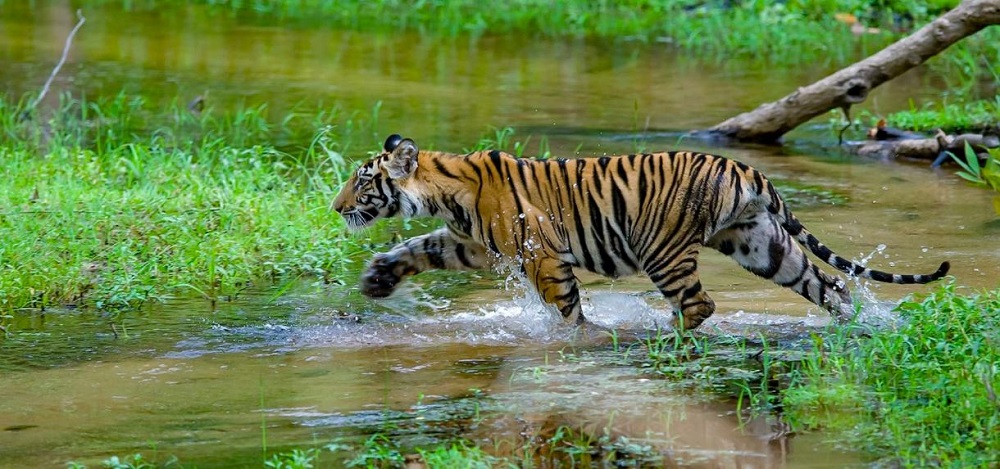

Bandhavgarh National Park, located in the Umaria district of Madhya Pradesh, India, has been a beacon for wildlife enthusiasts and photographers worldwide. The Tala Zone, known as the premium zone of the park, is particularly famous for its high density of Bengal tigers. With a history steeped in both natural wonder and royal legacy, Tala Zone has evolved into a major tourist attraction over the years.
Prior to becoming a national park, the Bandhavgarh region was maintained as a game reserve by the Maharajas of Rewa. The Tala Zone was at the core of these hunting grounds. It was during this royal patronage that the natural habitat was preserved, albeit for hunting. After India's independence in 1947, hunting by the royals was restricted, paving the way for conservation efforts.
Bandhavgarh was declared a national park in 1968 with an initial area of 105 square kilometers, which was later expanded to approximately 450 square kilometers. Tala Zone, being part of this expansive terrain, became one of the key protected areas within the park's limits. The park's designation as a national park was a pivotal point in its history, shifting the focus from royal hunting grounds to conservation and tourism.
With the establishment of Bandhavgarh National Park, the Tala Zone started to attract attention for its biodiversity and the significant presence of tigers. By the 1980s and 1990s, wildlife tourism had started to take shape, and the zone's accessibility to visitors bolstered its popularity. The early 2000s saw a surge in international and domestic tourists eager to catch a glimpse of the majestic tigers and explore the untouched beauty of the region.
What catapulted the Tala Zone into the limelight was the consistent sighting of tigers, which was unmatched by many other wildlife reserves at the time. Additionally, wildlife documentaries and photographs showcasing the rich biodiversity of the park contributed to its fame. The zone is not only known for tigers but also for its ancient fort, dense forests, and unique flora and fauna, making it a comprehensive wildlife destination.
Today, tourism in Tala Zone is characterized by guided jungle safaris, eco-friendly lodges, and a steady emphasis on sustainable tourism practices. Tiger tourism remains the zone's most enticing offering, with morning and evening safaris being the most sought-after activities. The latest trends also include bird-watching tours, as the zone is home to many species of birds, as well as photography expeditions led by professional wildlife photographers. Moreover, the area around Bandhavgarh is starting to develop with more amenities for tourists, including luxury accommodations and spa services that aim to provide a comfortable stay amidst the rugged wilderness. While tourism in the Tala Zone continues to climb, there is a significant effort to maintain a balance with conservation. Authorities have implemented stricter guidelines to control the number of vehicles and tourists entering the park to ensure minimal disturbance to wildlife and the ecosystem.
The Tala Zone's journey from royal hunting grounds to a celebrated wildlife sanctuary is a testament to the changing attitudes towards conservation and wildlife tourism. As the zone continues to be a shining example of India's natural heritage, its story inspires a continuing voyage of discovery, responsibility, and appreciation for the natural world.